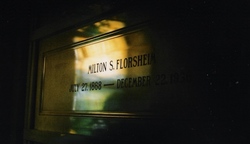http://www.universetoday.com/74412/astronomy-without-a-telescope-a-snowballs-chance/#more-74412 wrote:
Astronomy Without A Telescope – A Snowball’s Chance
Posted in: Planetary Formation by Steve Nerlich
<<Wanna build celestial objects? I mean it sounds easy – you just start with a big cloud of dust and give it a nudge so that it starts to spin and accrete and you end up with a star with a few wisps of dust left in orbit that continue to accrete to form planets.
Trouble is, this process doesn’t seem to be physically possible – or at least nothing like it can be replicated in standard theoretical models and laboratory simulations. There’s a problem with the initial small scale accretion steps.
Dust particles seem to stick readily together when they are very small – through van der Waals and electrostatic forces – steadily building up to form millimeter and even centimeter sized aggregates. But once they get to this size those sticky forces become less influential – and the objects are still too small to generate a meaningful amount of gravitational attraction. What interaction they do have is more in the nature of bouncing collisions – which most often result in pieces being chipped off the bouncing objects, so that they start getting smaller again.
This is an astrophysics problem known as the meter barrier.
But increasingly, theorists are coming up with ways to get around the meter barrier. Firstly, it may be a mistake to assume that you start with a uniform dust cloud, in which spontaneous accretion happens everywhere throughout the cloud.
Current thinking is that it may take a nearby supernova or a closely migrating star to trigger the evolution of a dust cloud into a stellar nursery. It’s possible that turbulence in a dust cloud creates whirlpools and eddies that favor the local aggregation of small particles into larger particles. So rather than going from a uniform dust cloud to a uniform collection of very small rocks – there is just a chance formation of accreted objects here and there.
Or we can just assume a certain stochastic inevitability about anything that has the faintest chance of happening – eventually happening. Over several million years, within a huge dust cloud that might be several hundred astronomical units in diameter, a huge variety of interactions becomes possible – and even with a 99.99% likelihood that no object can ever aggregate to a size bigger than a meter, it’s still entirely likely that this is going to happen somewhere in that vast area.
Either way, once you have a few seed objects, it’s hypothesised that the snowball process takes over. Once an aggregated object achieves a certain mass, its inertia will mean it becomes less engaged in turbulent flow. In other words, the object will begin to move through, rather than move with, the turbulent dust. Under these circumstances, it will behave like a snowball rolling down a
snow covered hill, collecting a covering of dust as it plows through the dust cloud – increasing its diameter as it goes.
The time span required to build such snowballed planetesimals from a radius (Rsnow) of 100 meters up to 1000 kilometers is long. The modelling used suggests a time span (Tsnow) of between 1 and 10 million years is required.
It’s also possible to model planet formation around binary stars. Using orbital parameters equivalent to those of the binary system Alpha Centauri A and B, the snowball process is calculated to work more efficiently so that T
snow is probably no more than 1 million years.
Once hundred kilometer-sized planetesimals have formed, they would still engage in collisions. But at this size, the objects generate substantial self-gravity and collisions are more likely to be constructive – eventually resulting in planets with their own orbiting debris, which then forms rings and moons.
There is evidence that some stars can form planets (at least gas giants) within 1 million years – such as GM Aurigae – while our solar system may have taken a more leisurely 100 million years from the Sun‘s birth until the current collection of rocky, gassy and icy planets fully accreted out of the dust.
So, there’s more than a snowball’s chance in hell that that this theory may contribute to a better understanding of planet formation.>>
 Coreshine from a Dark Cloud
Coreshine from a Dark Cloud